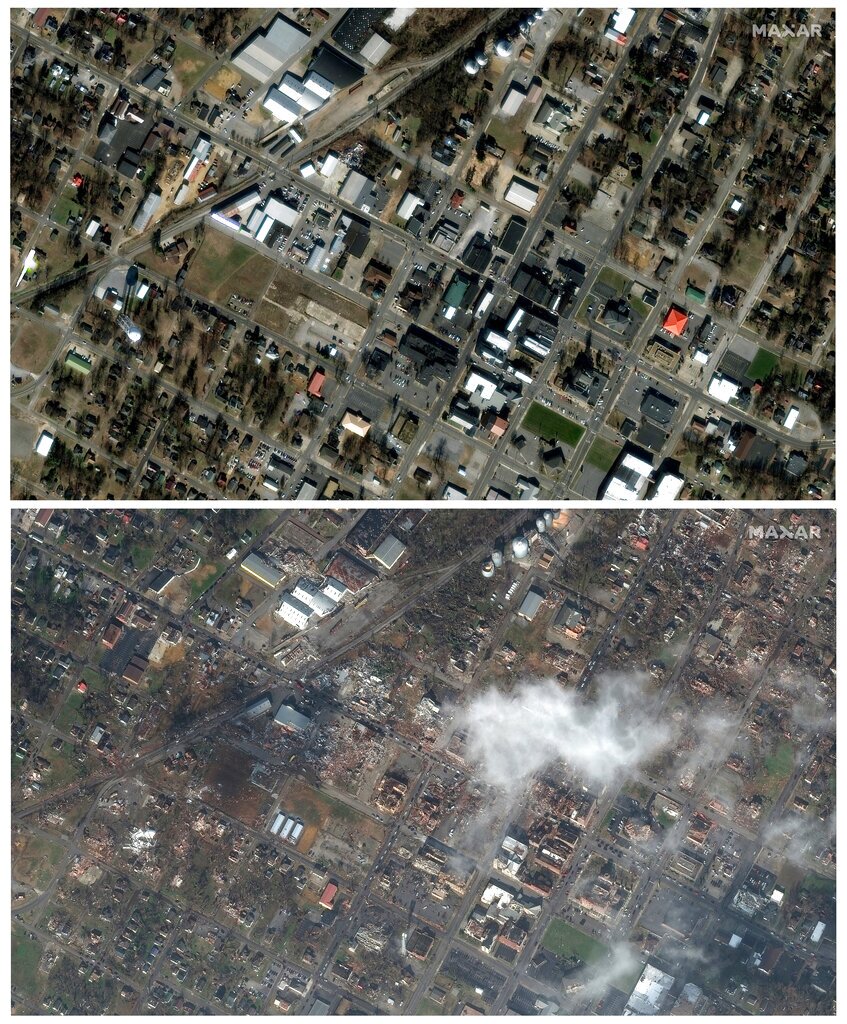NORMAN, Oklahoma — The formula that created the massive tornado that struck western Kentucky was extermely rare for December.
A warm and moist lower atmosphere (which is rare for December) and a clear and inactive jetstream (which is typical for December) created the perfect recipe. It was these two conditions which came together on Friday to create one of the longest, largest and most destructive tornadoes in US history. One that has left the state of Kentucky and several other states accounting for the loss and damage four days after it occurred.
The moisture in the air gave fuel for a massive supercell thunderstorm – a supercell and a tornado that lasted for several hours, traveling through the South and the Midwest, which is rare during any time of year. The jetstream conditions kept any possible disturbances, such as other storms, from taking moisture away from the supercell and stopping it. It was a rare set of conditions, one that has left over 80 dead as of Tuesday.
"In December, what is often the case, you have low-level moisture, which is often poured into the Mississippi valley," Matthew Elliott, Warning Coordination Meteorologist with the National Oceanic and Atmospheric Administration, said. "Getting frequent cool fronts that come through and pushing moisture from the Gulf of Mexico, that's a key ingredient for tornado creation. It's pretty uncommon in the wintertime to have it in that area."
Elliott said when strong storms usually occur in December, they're usually caused by squall lines that are small and produce straight-line winds. That wasn't the case with Friday's tornado.
"When you combine those two factors and put a supercell thunderstorm in that environment – one that's isolated by itself – then the potential for large, violent tornadoes increase substantially," Elliott said. "What made this event unique from many tornadoes in history was the longevity of the supercell thunderstorm. What happens usually is you get disruption from nearby storms. The fact this storm was uninhibited and on its own for so long allowed the tornado potential to be over a much longer path."
How long was the tornado, how powerful was it and was it actually a 'quad state' tornado?
Elliott said the National Weather Service has yet to determine the entire path and miles the tornado traveled. If a tornado leaves the ground for any length of time, and goes back down to the ground, then it's considered a different tornado.
The current record for a single tornado is held by the Tri-State tornado of 1925, the largest, longest-lasting and most destructive tornado in US history, which killed nearly 700 people and was on the ground for 219 miles through three states: Missouri, Illinois and Indiana.
Elliott said it may be a few more days before the NWS and NOAA can make determinations. He said both agencies will send a field team of meteorologists and structural engineers to determine the tornado's strength before giving it an official rating.
"They're working hard on determining the path and they're doing this right, using (drones) to determine if there is a complete path the whole way," Elliott said. "Regardless, it will still be one of the longest paths ever, even if there is a break at some point. It may be the longest, but we don't know for sure if it's the case. If it's possible that it may be greater than an EF-3, we will send out a quick-response field team."

Was the supercell and the tornado caused by climate change?
Weather research has shown that single tornadoes are a poor way of determining if climate change is a factor in changing weather patterns, Elliott said.
"In terms of changing climate, tornadoes are such a small-scale feature of overall weather," Elliott said. "But there is potential for tornado activity if you get a strong jet stream with moisture and warm air this time of year. It's a little bit in-definitive. Certainly there's been strong tornadoes this time of year in the past, in areas like Arkansas and Tennessee, but in December and of this magnitude, it's very rare."
What should people take away from Friday's tornado?
Elliott said people should realize tornadoes can occur no matter where they live in the US, and during any time of year. In some areas, they're rare during any time of year, but there are still possibilities that they can occur. He said the advance forecasts ahead of the storm on Friday showed that a strong supercell was likely.
"You need to prepare ahead of time and know what to do when you're in this situation," Elliott said. "When you have a plan in place in the middle of a tornado warning, you aren't trying to figure out where to go. You can make quick decisions. Also, just because there was a warning during the last storm, and it missed you, it doesn't mean it will miss you this time."
Kentucky Tornado
Tornado: Kentucky family hid in closet as tornado ripped through home
DWYM: Want to help tornado victims? How to avoid getting scammed
WCPO: NKY Mom raises thousands for Bowling Green tornado victims



